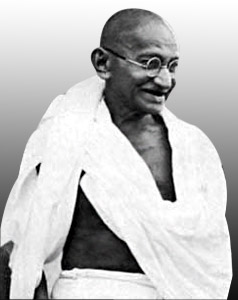 Civil Disobedience Movement, launched under the leadership of Mahatma Gandhi, in 1930, was one of the most significant phases of Indian freedom struggle. The Simon Commission, which was formed in November 1927 by the British Government to chart and conclude a Constitution for India, included members of the British Parliament only. As a result, the Commission was boycotted by every section of the Indian social and political platforms as an `All-White Commission`. The opposition to the Simon Commission in Bengal was noteworthy. In disapproval against the Commission, a `Hartal` or Strike was observed on 3rd of February, 1928 in various parts of the region. Widespread demonstrations were held in Kolkata on 19th of February, 1928, the day of Simon`s arrival to the city. Further, on 1st of March, 1928, meetings were held simultaneously in all 32 wards of the city, spurring people to restore the movement for boycott of British goods.
Civil Disobedience Movement, launched under the leadership of Mahatma Gandhi, in 1930, was one of the most significant phases of Indian freedom struggle. The Simon Commission, which was formed in November 1927 by the British Government to chart and conclude a Constitution for India, included members of the British Parliament only. As a result, the Commission was boycotted by every section of the Indian social and political platforms as an `All-White Commission`. The opposition to the Simon Commission in Bengal was noteworthy. In disapproval against the Commission, a `Hartal` or Strike was observed on 3rd of February, 1928 in various parts of the region. Widespread demonstrations were held in Kolkata on 19th of February, 1928, the day of Simon`s arrival to the city. Further, on 1st of March, 1928, meetings were held simultaneously in all 32 wards of the city, spurring people to restore the movement for boycott of British goods.
Mahatma Gandhi was arrested on 5th of May, 1930, just days before his projected raid on the Dharasana Salt Works. The Dandi March and the resultant Dharasana Satyagraha drew worldwide attention to the Civil Disobedience Movement through widespread newspaper coverage. It continued for almost a year, ending with the release of Mahatma Gandhi from jail and after the discussions at the Second Round Table Conference with Viceroy Lord Irwin. The crusade had a significant effect on changing British attitudes toward Indian independence and caused huge numbers of Indians to aggressively join the fight for the first time. The Salt March to Dandi and the flogging of hundreds of non-violent protesters in Dharasana, marked the efficient use of civil disobedience as a method for fighting social and political injustice.
On 8th of April 1929, members of the Hindustan Socialist Republican Association attacked the assembly chamber of the Imperial Legislative Council in Delhi. In response, Lord Irwin published a Public Safety Bill. Moreover, on 31st of October, Lord Irwin announced that the natural constitutional progress of India was the attainment of Dominion Status. The Congress Party indicated its willingness to cooperate in formulating a Dominion constitution. In November, measures were accepted in such a way that Congress rejected the declaration.
On 23rd of December, Lord Irwin met with Mahatma Gandhi, Jawaharlal Nehru, Sardar Vallabhbhai Patel, Mohammad Ali Jinnah and Tej Bahadur Sapru in New Delhi. Erwin however, could not arrive at an agreement for framing a constitution under Dominion Status. At the ensuing 1930 annual meeting of the Congress Party held at Lahore, the Congress declared itself for independence rather than Dominion Status and authorised a campaign of Civil Disobedience. Gandhi`s Civil Disobedience Movement came out as a march to Dandi, in objection to the tax on salt. Gandhi reached Dandi on April 6th, and explicitly violated the salt law.
On 18th of April, around one hundred revolutionaries attacked police and railway armouries at Chittagong. Mahatma Gandhi condemned the raid, which had made a deep impression throughout India. On 5th of May, the Government of India had Gandhi arrested and lodged at Yervada Jail near Pune. Following the arrest of Mahatma Gandhi, the British faced the full programme of Civil Disobedience as composed of Indian raids on salt depots, refusal to pay taxes in chosen areas, spirits and avoidance of business with all British firms, disobedience of forest laws and boycott of foreign cloth.
On 30th of June, the Government of India outlawed the All-India Congress Committee and the Congress Working Committee. Further, on 23rd of July, Lord Irwin facilitated visits to Mahatma Gandhi and Jawaharlal Nehru by two Indian Liberals, Sir Tej Bahadur Sapru and Mukund Ramrao Jayakar, for the purpose of finding ways to end civil disobedience movement. On 25th of January 1931, Lord Irwin authorised Gandhi`s release from prison and withdrew prohibition of illegality against the Congress Working Committee.
Between February to March, 1931, Lord Irwin and Gandhi met in a series of talks seeking settlement of the issues originating from the civil disobedience movement. In the agreement reached on 5th of March, Gandhi agreed to discontinue Civil Disobedience as it embraced defiance of the law, non-payment of land revenue, publication of news-sheets, termination of its boycott of British goods and the restraint of aggressive picketing. The Government of India agreed to cancel ordinances opposing the movement, to release Indian prisoners, return fines and property.



















